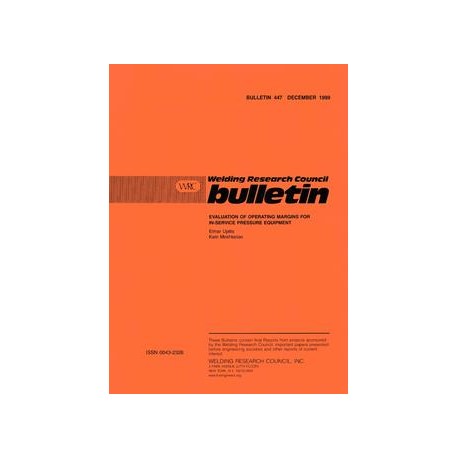More info
Full Description
In the design of structures, including pressure vessels and piping systems, consideration must be given to uncertainties in material properties, loading conditions, fabrication and welding, geometric shape and the design approach. Although probabilistic or risk-based approaches are becoming more common, the traditional approach of applying a margin (sometimes called a "safety factor") to one or more of the design parameters is still the predominant method for dealing with these uncertainties in the construction of new pressure equipment. Many new construction codes and standards apply a margin to one or more material strength parameters. For example, the ASME Boiler and Pressure Vessel Code, Section VIII, Division 1 limits the primary membrane stress in materials operating below the creep regime to 2/3 of the yield strength or 1/3.5 times the tensile strength, whichever is lower. This overall margin accounts for uncertainties in all of the parameters listed above, except that an additional margin is applied to certain weld seams that are not fully examined. As the science of the evaluation of flaws in-service pressure equipment advances, it is likely that probabilistic or risk-based approaches will be used extensively. These approaches may be implemented through the use of partial margins (partial safety factors) applied to the individual variables which are used in the design or analysis of the equipment. Appropriate values for partial margins can be determined mathematically, based on the uncertainty in the individual variables, as expressed by statistical parameters such as mean and standard deviation, and a target probability of failure. However, the concept of an overall margin, as used by new construction codes, will probably continue to be useful for the evaluation of in-service equipment in many cases. This study has been done to provide guidance in establishing appropriate margins on material parameters when this approach is selected. In many cases, the guidance in this document will result in margins that are lower than new construction margins if the level of uncertainty in one or more of the design parameters can be reduced. The recommendations in this study can be used by organizations performing flaw evaluations or re-rating equipment. It is also anticipated that they will be considered by the ASME, API and other organizations that are developing standards in this area.
 View larger
View larger

